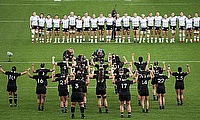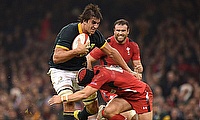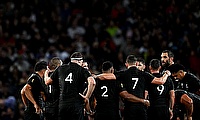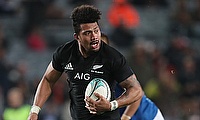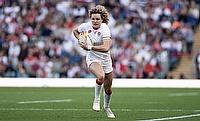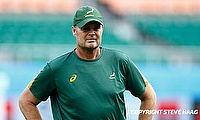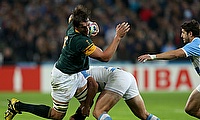New influx of talent set to maintain U20s status quo
Since its inception in 2008, the World Rugby U20 Championship, or Junior World Championship as it used to be known, has seen the trio of New Zealand, England and South Africa make up the top three teams at the tournament in four of its eight editions.
Their dominance has only been briefly interrupted by Wales and Australia, both of whom have picked up runners-up and third-place medals over the last eight years, but despite their intermittent challenges, at no point over the last eight tournaments have more than one of New Zealand, England or South Africa fallen outside of the top three in any given year.
That status quo was maintained this year, as New Zealand narrowly vanquished England in the final, whilst the Junior Springboks showed their class and saw off the challenge of an in-form France to finish third.
This status quo looks to be reinforced next year, as all three sides welcome a host of talented players from their U18/Schools sides and we have picked out some of the brightest prospects to keep an eye on over the next 12 months.
Sio Tomkinson, New Zealand
The next talented midfielder to roll off the Kiwi production line, Tomkinson has been one of the standout players for the New Zealand Schools side of late and won the MVP award following their victory over Australia last year, following in the footsteps of Carlos Spencer and Victor Vito to name but a few.
A product of Otago Boys’ High School, Tomkinson has a cultured boot on him, as well as the size and instincts to make him a dangerous threat with ball in hand.
He signed a two-year contract with Otago earlier this year and it will be worth keeping an eye on the ITM Cup this year to see if Tomkinson can have a similar impact when he steps up to the next level.
Ayden Johnstone, New Zealand
For those who have been watching, there’s been a noticeable slump in the calibre of New Zealand’s set-piece over the last few U20 Championships, but Johnstone is one of a group of players capable of reversing that trend.
The loosehead co-captained Hamilton Boys’ High to a win at the Sanix World Youth Rugby Tournament in Japan and aside from an embarrassing incident where players from the school were arrested for shoplifting, led a very impressive effort from Hamilton.
Johnstone has since gone on to captain Hamilton solely, leading them in a successful campaign in their native New Zealand and has done enough to earn himself a place in the Chiefs Development squad, which includes current U20 captain and Championship winner, Atunaisa Moli.
Harry Mallinder, Max Malins, Theo Brophy Clews and Mat Protheroe, England
England will have a bevy of fly-half options next year and may be piecing together a side which even outstrips the 2013 and 2014 JWC-winning sides in terms of potential.
Mallinder would have made the tournament this year had it not been for an injury just prior to the team leaving for Italy, whilst Malins and Brophy Clews have both represented the U18 side with distinction this year and are set to tour South Africa in August.
Protheroe is the unknown variable in the mix as although he represented England U18s this year and has signed a long-term contract with Gloucester, he is Welsh born and raised, and may have senior interest from Wales to weigh up. A year with the England U20s wouldn’t tie him down, as the Saxons are England’s designated second side, and he could later represent Wales, a path which Ross Moriarty is currently treading.
The strength of this quartet is that, despite all being fly-halves, it shouldn’t create the bottleneck that on paper looks likely. Malins has been at 12 for England U18s for much of this season, whilst Protheroe is as gifted at full-back as he is at first receiver. Brophy Clews can turn his hand to a role on the wing and has even done so at Premiership level for London Irish this season.
The England U20 starting back line could feature all these players next season alongside the still eligible Joe Marchant and George Perkins, potentially giving them a back line every bit as dangerous as their Kiwi rivals.
Curwin Bosch, South Africa
Bosch was named the 2014 Craven Week Player of the Year, a prestigious accolade in South African youth rugby, and follows in the footsteps of Johan Goosen, Jan Serfontein and Sergeal Petersen.
Like Protheroe, Bosch is a gifted fly-half/full-back, and like the English quartet, gives his nation much to be optimistic about moving forward. Bosch would certainly add a spark the South African U20 back line, something which was clearly missing in their pivotal match with England this year.
Bosch should have plenty of opportunities between now and the 2016 U20 Championship to stake his claim for why he should start over Tinus de Beer, who was this year’s understudy at 10 for the Junior Springboks and who is also an ex-teammate of Bosch’s at U18 level.
Jaco Coetzee, South Africa
With South African U20 captain Hanro Liebenberg graduating with honours from age-grade rugby this summer, it could open a spot for back rower and potential captain, Coetzee.
Coetzee has captained the impressive South Africa schools team previously and, like the vast majority of South African back rowers, is definitely physically ready for the step up to the U20s.
There is an excitement in South Africa over the potential of Coetzee, who rather than adhering to the individual stereotypes of a particular back row position, encompasses every skill required to play anywhere amongst the

